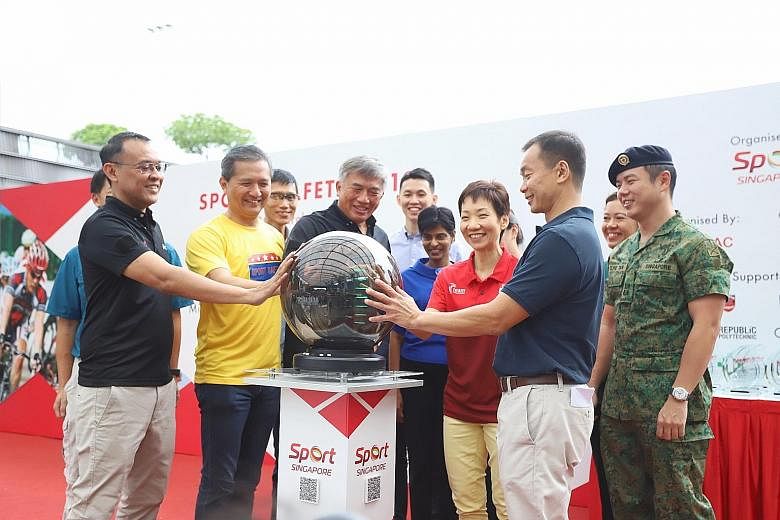A routine swim before the National Day holiday last year nearly ended in tragedy for Mr Lee Boon Ping, who suddenly lost consciousness in the pool at Hougang Swimming Complex.
As the pool was equipped with a computer vision drowning detection system, which was then on trial, it sounded an alert upon detecting that Mr Lee had sunk to the pool floor. The lifeguard on duty managed to save him.
The 63-year-old recalled being in a daze after he regained consciousness, and was hospitalised for a week.
He told The Sunday Times in Mandarin yesterday: "I wasn't feeling well that day, and after swimming a third lap, I suddenly lost consciousness and sank (to the pool floor). Luckily, the lifeguard saved me."
It is no surprise that the part-time deliveryman has welcomed the new recommendations to the third edition of the Sports Safety Committee Report, which was launched yesterday at the OCBC Square outside Kallang Wave Mall. Minister for Culture, Community and Youth Grace Fu was the event's guest of honour.
National sports agency Sport Singapore (SportSG) revealed that public sports facilities here saw close to 17 million visits in 2017.
And some 68 per cent of respondents to the National Sports Participation Survey take part in sporting activities on a weekly basis, highlighting the need to enhance safety levels.
-
KEY RECOMMENDATIONS
Get Active Questionnaire
The Get Active Questionnaire (GAQ) replaces the Physical Activity Readiness Questionnaire (PAR-Q), which allows members of the public to gauge their physical fitness before exercising.
The GAQ is more comprehensive, with updated screening questions that allow for each person to better assess the type of physical activity suited for him or her and when to consult a doctor.
Chapter on heat injuries
Recommends education on preventive measures against heat injuries for both athletes and coaches. Medics should also be kept updated on the latest practices and emergency measures in the event of exercise-associated collapse.
Chapter on water safety
Includes the Water Safety Code of Practice for Aquatic Facilities, which applies to stakeholders such as parents, caregivers and facility owners with pools, as well as anyone else in a position to advocate safety.
The new recommendations place greater emphasis on "eliminating preventable safety incidents across a wide range of settings, including competitive and school sport, recreation and fitness activities".
They include a chapter on water safety, which covers the Water Safety Code of Practice for Aquatic Facilities, and one on heat injuries, which recommends education on preventive measures for both athletes and coaches.
The Physical Activity Readiness Questionnaire (PAR-Q), which allows members of the public to gauge their physical fitness before exercising, will be replaced by a more in-depth version.
Called the Get Active Questionnaire (GAQ), the updated screening questions allow people to better assess the type of physical activity suited for them and when to consult a doctor.
The GAQ is available on the SportSG website and will be distributed to sports centres.
Dr Benedict Tan, the co-chairman of the Sports Safety Committee, said the updated questions are more comprehensive.
"The PAR-Q was very cardiac-focused, but injuries happen not just in terms of cardiovascular injuries or strokes - there are musculoskeletal injuries as well. The new questionnaire has a musculoskeletal aspect, which is a very common issue that participants have," said Dr Tan, who is also chief of the department of sport and exercise medicine at Changi General Hospital.
The 32-member Sports Safety Committee - comprising doctors, exercise physiologists and safety experts, as well as key stakeholders including the Ministry of Education, the Singapore Armed Forces and the Singapore Civil Defence Force - was convened in 2016 to put the latest report together.
"It was necessary because there were a lot of changes in the physical activity trends. There were newer sports that became popular and some of them were higher-risk," said Dr Tan.
SportSG plans to conduct sharing sessions for national sports associations, event organisers and other stakeholders who stand to benefit from the new recommendations.
Mr Lee, who has an underlying heart condition, believes the GAQ can help him make a better assessment of his physical condition.
He now swims every day, but will no longer over-exert himself if he does not feel well.
"I have no reason to take such a gamble on my life," he said.


